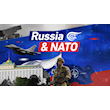Tales from the Holy War in Donetsk
In this piece, Tim Anderson writes on the situation in Donetsk, elucidating what the city has seen, the influence of religion in the fighting, and on what civilians have endured from Kiev's forces who showed them little sympathy.
-
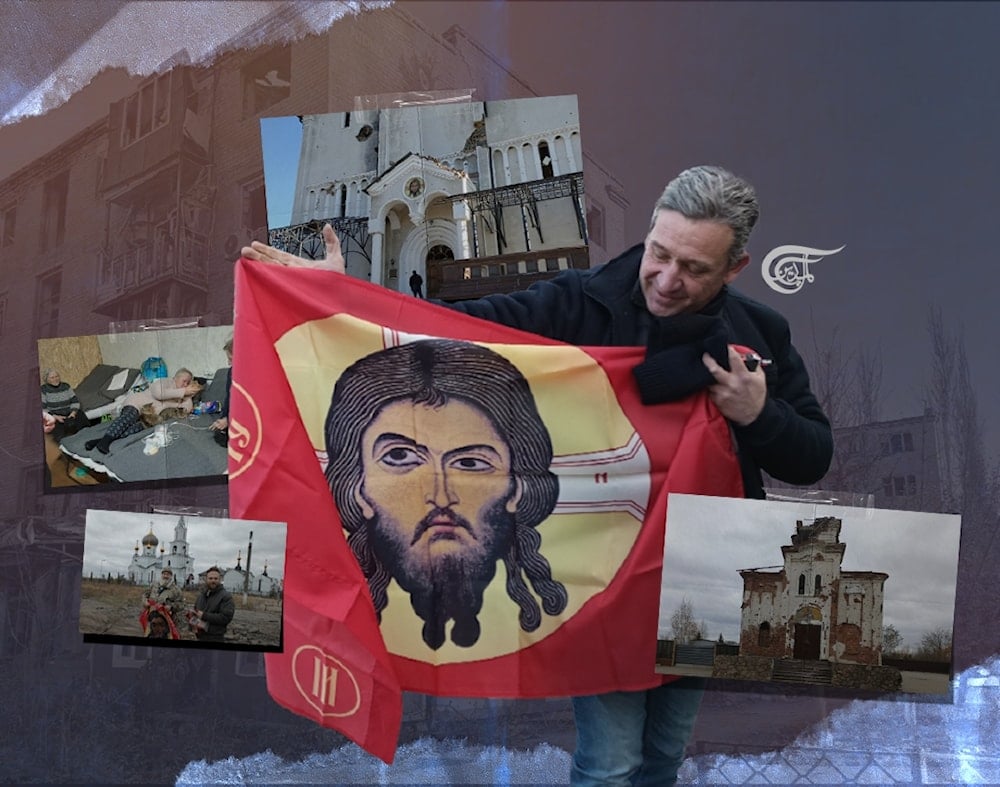
In each liberated zone, banners of Christ the Saviour (Styag) were distributed to soldiers and placed or replaced by fresh ones on sites liberated from the enemy. (Al Mayadeen English; Illustrated by Ali Al-Hadi Shmeiss)
The Russian Special Military Operation of 2022 in SE Ukraine can be understood in secular terms, as the Russian state finally moving to protect the Russian people of Ukraine after they were disenfranchised by the 2014 Kiev coup and installation of a NATO-backed, ultranationalist regime.
I won’t waste time here with the dishonest Western claims that the SMO was an “unprovoked” act which signals a wider threat to Europe, I have previously explained the history in an article which set out the defensive character of the SMO, distinguishing it from the imperial invasion of Iraq In 2003.
What I would like to show here is that, from the Russian side, this has become a holy war, in defence of religious and traditional values, a force which motivates and sustains Russian military morale and cohesion.
I saw several aspects of this on a November 2024 tour of Russian captured frontline zones in Donestk, the former Ukrainian Oblast which is now a Republic within the Russian Federation.
Fighting between Russian forces and the NATO fortified Kiev military has ranged across the Donbass region but has been most intense in western Donetsk, where Ukraine forces have defended strategically important towns. Yet in all the famous recent battles - Bakhmut, Avdeevka, Vuhledar/Ugledar – Russian forces have prevailed.
In all these areas, as well as in Donetsk city (held by rebel forces since 2014) stories of this holy war emerge.
Avdeevka, just north of Donetsk and sometimes called “the Stalingrad” of the Donetsk war, was liberated in February 2024. By November the sound of artillery was several kilometres farther west.
I travelled in a group with my academic friend Andrey Afanasyev, cameraman Dmitri, two foreign journalists and two more from the military religious branch, led by Father Svyatoslav. In each liberated zone, banners of Christ the Saviour (Styag) were distributed to soldiers and placed or replaced by fresh ones on sites liberated from the enemy.
The image of this particular banner is said to have originally come from the imprint made on a merciful woman’s handkerchief as she wiped the face of Jesus on his way to Calvary. For that reason it is the called banner of the Saviour “Not Made with Hands”, the first state flag of Russia.
At the outskirts of Donetsk city we visited the Iverskiy monastery, which had been hit many times by Kiev forces when they had control of Avdeevka. It remains so far unrepaired, as a symbol of resistance.
-

The battered Iverskiy monastery, on the northern outskirts of Donetsk city.
Further north in Avdeevka there is a parallel scene, where the Church of St. Mary Magdalene lay between the Donetsk-Russian and Kiev-Ukrainian forces, and where the latter dug into abandoned civilian housing behind the Church. Russian forces tried their best to avoid shelling the church.
As we visited that church and met caretaker Alexey, Andrey and his colleagues put up fresh Christ the Saviour flags to replace the older ones, while Father Svyatoslav handed out packages of flags, badges and literature to every passing military vehicle. They all gladly accepted them. This Saviour flag is after all the symbol of Russian holy warriors for a thousand years, as documented in a book by Vladimir Robertovich Anishchenkov.
-

Father Svyatoslav and Andrey outside the Church of St. Mary Magdalene in Avdeevka
There are signs that the town is slowly emerging from the rubble, though not as fast as reconstruction in the southern Donetsk city of Mariupol. The new residential blocks, parks and college facilities have made the seaside town once again attractive to residents and tourists alike, after the huge famous February-May 2022 battle to evict the Neo-Nazi Azov Brigade from the Azovstal steelworks.
-
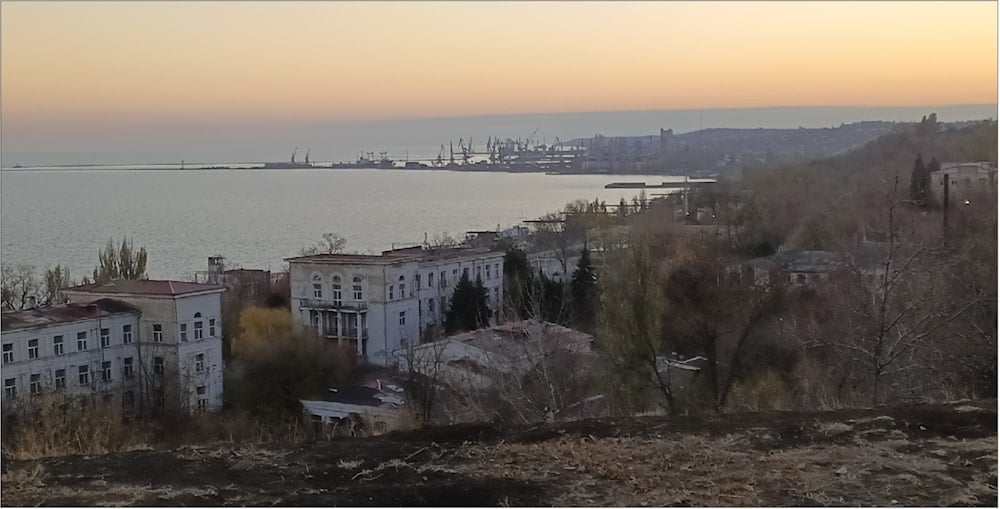
Beautiful Mariupol City is once again a sea of tranquillity, unlike north-western Donetsk
Nevertheless, in Avdeevka some residents have begun repairing their homes in the hope that the artillery of Kiev forces remains at a distance. A downtown mural is a sign of hope for the future.
-
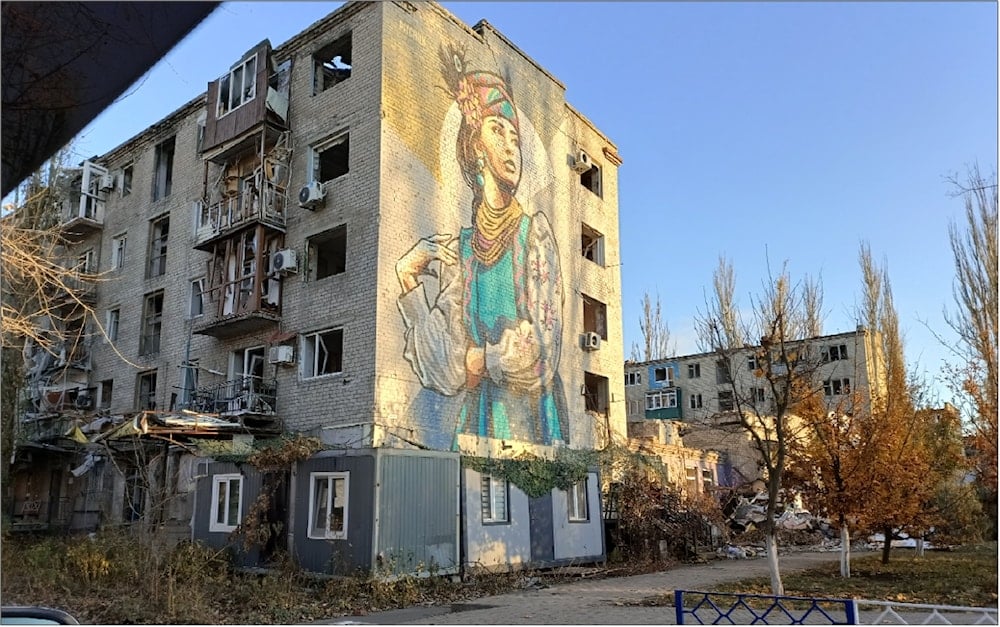
Mural on a damaged residential block, Avdeevka
The devastated city is also a site of refugees and false angels. Amongst the few who remained in Avdeevka during the Kiev occupation was a father who told us he hid his 12-year-old daughter from child kidnappers behind a false wall he made in his apartment.
These kidnappers called themselves “White Angels”, a Kiev endorsed “humanitarian” group - modelled on the US-backed, al-Qaeda aligned “White Helmets” in Syria - which claimed to remove children to safety, out of war zones. Yet like the White Helmets in Syria, these “White Angels” had a fearsome reputation, associated with ultranationalist death squads. Local people feared their abducted children were being sold into paedophile rings in the West, or sold for organ trafficking.
The fear of this White Angels group was so great that eight months after Kiev forces had been expelled, neither the father nor his daughter were willing to be shown or identified. However, one of his neighbours gave me a picture of a bear named Avdeevka, asking me to take it to Australia so as to not forget her town. She was of the few who remained in the town during the entire battle.
-

Avdeevka 2024
Deeper inside the town, in an army run facility, was a temporary shelter for refugees from other parts of western Donetsk. These people had often been cut off from their families, who may have fled east or west from the war. In the Kiev occupied areas, they often had limited access to food and health care and could face serious consequences if caught speaking by telephone to relatives in Russian controlled areas. Ukrainian extremists had detained and killed many “Russian sympathisers”.
I was told they were only looking at about 24 hours in this makeshift refuge, they would soon be moved on, perhaps to Donetsk City, perhaps to central Russia, depending on their needs and relatives.
-
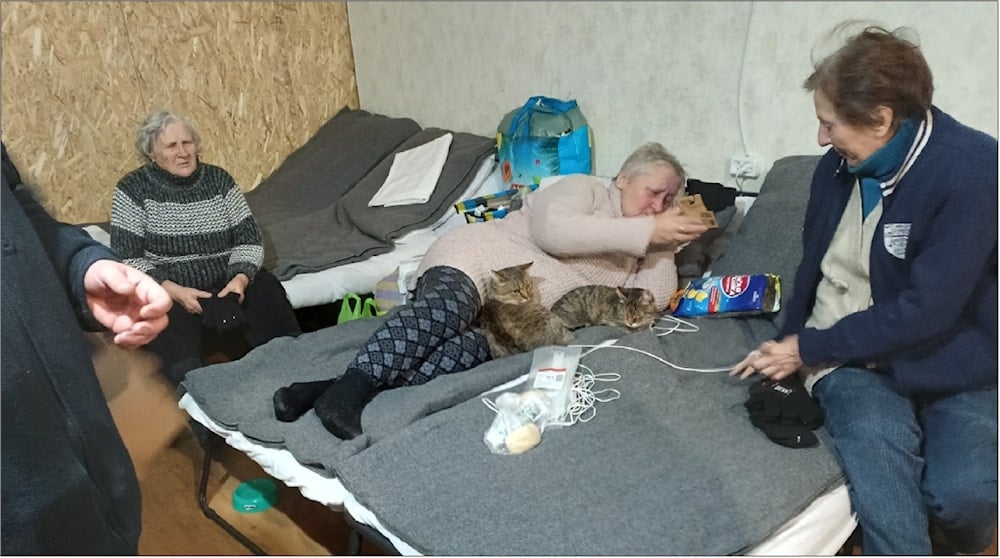
Residents (and their cats) at a makeshift centre for refugees, Avdeevka.
A makeshift shop was set up in a truck, selling drinks and packaged food. The clients were mostly Donetsk volunteers and Russian soldiers. With enemy artillery just down the road, the entire town is still virtually a frontline area.
-
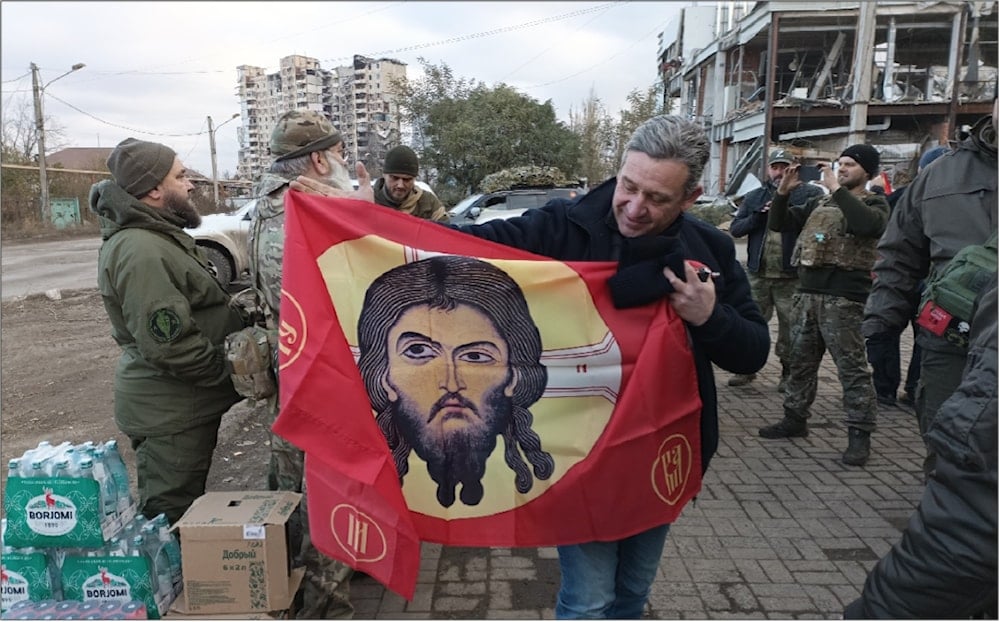
Donestk volunteers and Russian soldiers at a makeshift shop in Avdeevka
Further south west of Donetsk city is the newly liberated coal town of Vuhledar, called Ugledar by the Russians. Just a few weeks earlier, in October 2024, Kiev forces were driven out. Yet artillery fire was close. My Russian hosts asked us all to put on flak jackets, as we went to visit the ancient monastery and cathedral of Saint Nicolay and Vasili.
Here the initial focus of our group was on the fact that, despite the tremendous damage inflicted by fire from Kiev forces, when they held Vuheldar/Ugledar town, most of the crosses of the monastery and cathedral remained intact. I have written about this in another article.
The root of the antagonism of Kiev towards the Orthodox Church seems to be that, whether the religious leaders consider themselves Russian or Ukrainian, most regard both groups (and the Byelorussians) as “one people”. The recent schism in the Orthodox Church was driven by Kiev, which, as Andrey says, “wants to be part of the West” and has been happy to help Washington drive a wedge between the Ukrainian and Russian people.
-

The monastery and cathedral of Saint Nicolay and Vasili, outskirts of Vuheldar/Ugledar
Back in Donetsk city, we were put in touch with a group of Ukrainian defectors, who decided to form the volunteer Maxim Krivonos group to fight alongside Russian forces. I was one of several people who interviewed them, in a remote part of the city; they were still afraid of Kiev spies.
I asked Nemo and Hunter why they were fighting and they replied that they opposed the fascist regime in Kiev and its destruction of the young people of their nation in a war only designed to drive a wedge between Ukraine and Russia. “We are fighting for the real freedom of Ukrainian people … so that the best people of our nation wouldn’t be destroyed by those who conquered and took control of our country … We are now facing the destruction of people and country … when you see how young people are being destroyed you understand that there will be no future for you, so we need to say that.”
These two young men identified as Ukrainian yet, as their group name Maxim Krivonos suggests, they believe in the union of Ukrainian and Russian peoples against Western invaders. Their military emblem contains the Cross - the symbol of Orthodox religion which all Russian warriors have pledged to defend, and the Crescent - the symbol of Virgin Mary, a special patron of the Russian military and especially the Cossacks. So Ukrainian defectors have also made themselves part of the holy war in Donetsk.
-

Nemo and Hunter and (bottom left) the Emblem of the Maxim Krivonos Volunteers

 Tim Anderson
Tim Anderson
 8 Min Read
8 Min Read


